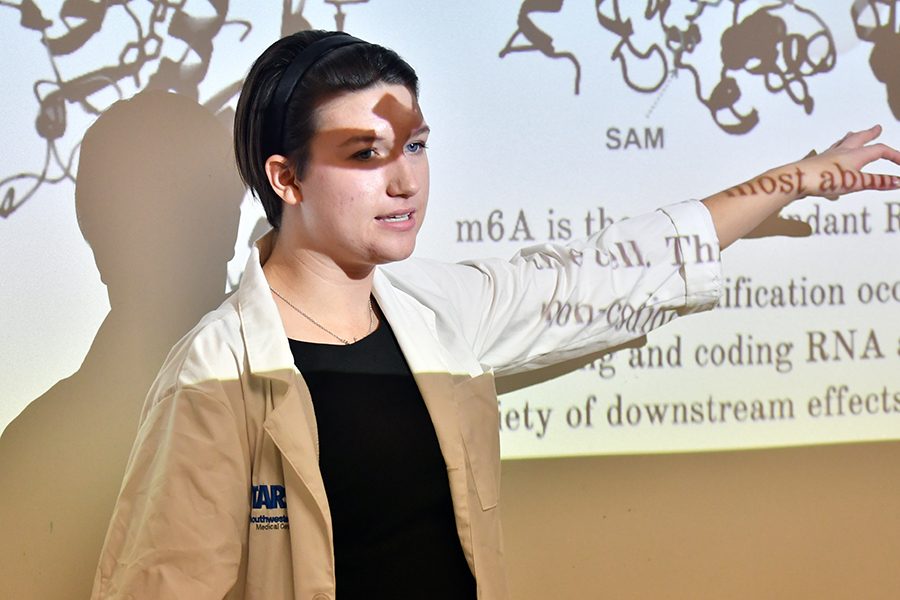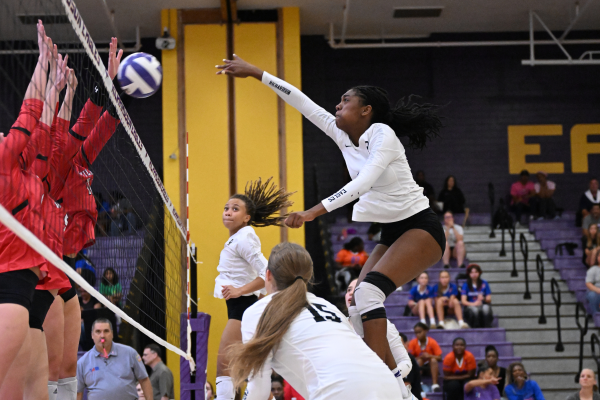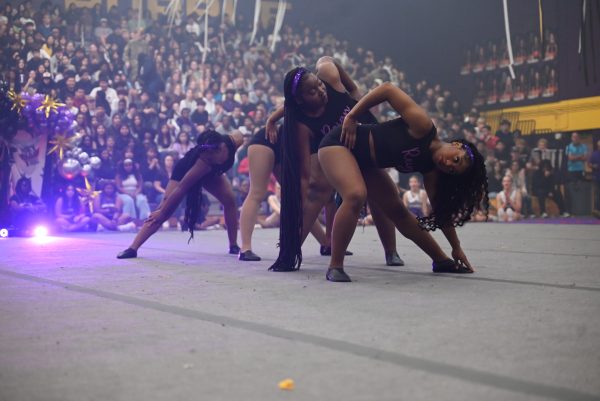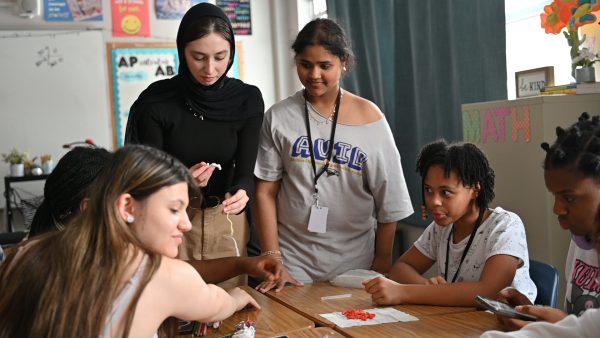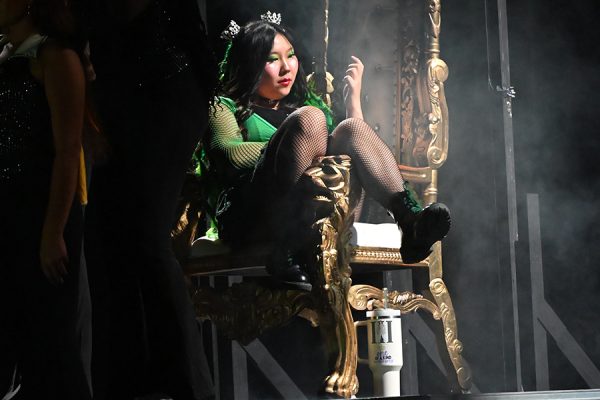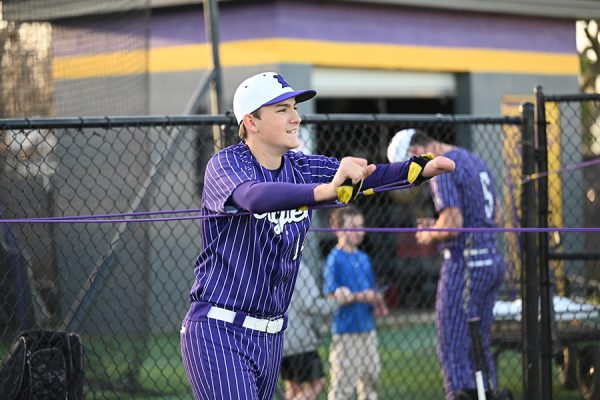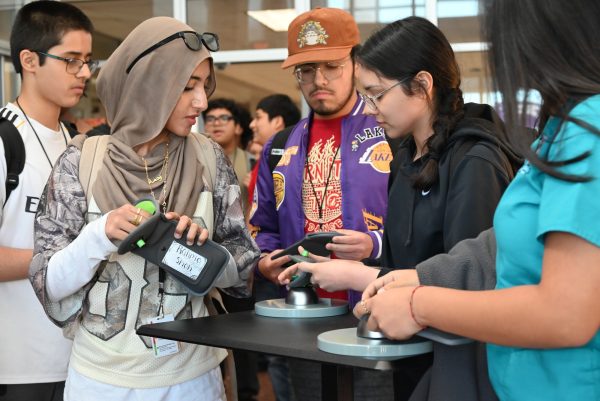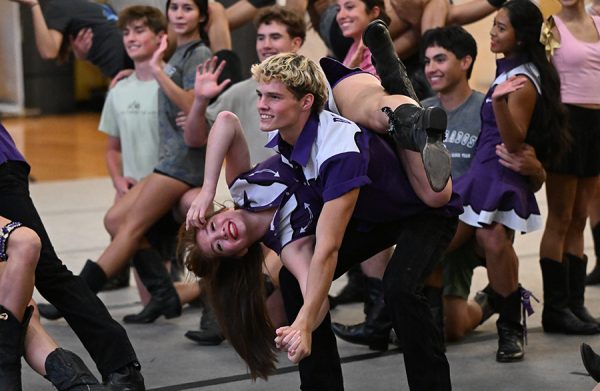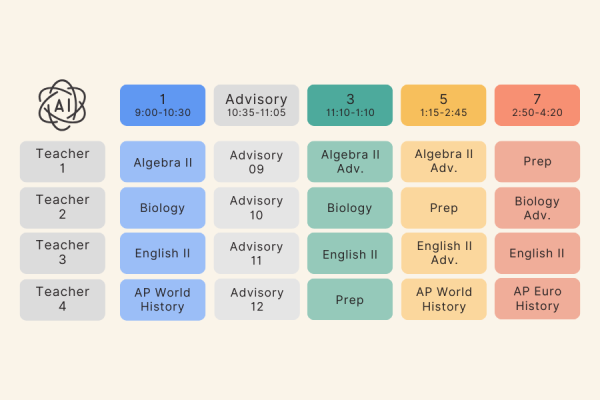Reaching for the STARS
Senior Miranda Gavitt explains the experiment she completed for her summer research internship at a presentation for students. Photo by Brantley Graham
By Isabel Costian
Senior Miranda Gavitt took a sip from her pink travel coffee cup as she gazed through the window of her lab, keeping a watchful eye on her experiment. Her necklace, shaped like a caffeine molecule, sparkled in the fluorescent lights of UT Southwestern’s Moss building.
Six months later, long after her experiment had concluded, Gavitt wore the same caffeine necklace at her presentation at the school about her experience with a selective STEM research internship program over the summer.
“It’s an educational opportunity specifically for high schoolers and teachers to gain access to resources and opportunities that they otherwise wouldn’t have to make them better teachers and students,” Gavitt said.
Gavitt was accepted to the Science Teacher Access to Resources at Southwestern (STARS) Summer Research Program her junior year to work in a biochemistry lab alongside Dr. Yunsun Nam, a member of the UT Southwestern faculty.
“She was truly working with the UT Southwestern faculty, kind of on her own in the real world,” AP Chemistry teacher Amy Hammer said. “I think a lot of times we hold our students’ hands and guide them a little bit too much and this was great because it gave her that opportunity that a lot of students don’t get.”
Gavitt’s experiment involved non-coding RNAs, or RNA molecules that do not translate to proteins. These molecules were so minuscule that they were not able to be seen, even under a microscope.
“I thought that was cool,” Gavitt said. “It just looks like clear liquid, oftentimes. I got to use a green liquid once and it was thrilling.”
The eight-week-long program takes place on the UT Southwestern campus and grants each research intern with a $2,800 stipend.
“It was a nice little happy surprise I found out about when I was applying,” Gavitt said. “I was like ‘yes! I get paid to do science – my life!’”
Hundreds of high school juniors in North Texas apply for the internship every year, but only 44 students were selected for the summer of 2016. Students came from Forney, Denton and even as far as the border between Texas and Oklahoma.
The interns were split up into groups based on their specializations. Gavitt said that her group bonded quickly after visiting the Dallas Museum of Art and Klyde Warren Park and creating a group chat which accumulated almost 1,000 messages in the first night.
“It’s a whole great mix of diverse people who all have very different experiences but are all really excited about science,” Gavitt said. “It’s a really cool environment.”
Students who were interested in applying for the STARS program attended Gavitt’s presentation to learn more about the application process, the day-to-day schedule in the lab, and the different fields that students can pursue.
“I think it’s really interesting in the fact that it’s not just a research program, but it’s more like you’re actually surrounded by people who are passionate about this, and you can see their different perspectives toward this kind of science and then you yourself are kind of learning from that,” senior Emily Chen said.
Hammer advertised for the presentation by promising to write recommendation letters for juniors who attended and sent her a rough draft of their application essay.
While only a small amount of the applicants are chosen to participate in the program, RISD has at least one guaranteed spot each year for a junior that’s interested in pursuing science.
“I am definitely going to apply to be a part of the program next year because it will help me understand so much more about science and health care, which is what I would like to study in college,” sophomore Ceone Agere said. “Not only are you working with professionals and getting real life experience, but you also get paid.”

